|
|
| |
|
Year |
Awardee(s) |
Title of Paper |
2012 |
John W. Snedden, William E. Galloway, Timothy L. Whiteaker, and Patricia E. Ganey-Curry |
Eastward Shift of Deepwater Fan Axes during the Miocene in the Gulf of Mexico: Possible Causes and Models
|
2013 |
Jerry Lucia and Robert Loucks |
Micropores in Carbonate Mud: Early Development and Petrophysics
|
2014 |
Robert G. Loucks and Robert M. Reed |
Scanning-Electron-Microscope Petrographic Evidence for Distinguishing Organic-Matter Pores Associated with Depositional Organic Matter versus Migrated Organic Matter in Mudrock
|
2015 |
Shirley Dutton, Robert G. Loucks, and
William A. Ambrose |
Factors Controlling Permeability Variation in Onshore, Deep Paleogene Wilcox Sandstones in the Northern Gulf of Mexico Basin: Targeting High-Quality Reservoirs
|
2016 |
J. Carl Fiduk, Vivian Robertson, Marianne Clippar, George A. Jamieson, and Sarah Power |
Extensional Salt Keels Detached on Eocene-Oligocene Sediments in the Deepwater Northern Gulf of Mexico: Insights into Canopy Advancement, Salt-Sediment Interplay, and Evidence for Unrecognized Mass Sediment Displacement
|
2017 |
Qifei Huang and Yuefeng Sun |
Carbonate Reservoir Characterization Using the Cementation Factor: A Case Study of Little Cedar Creek Field, Onshore Alabama
|
2018 |
Lauri A. Burke, Ofori N. Pearson, Scott A. Kinney, and Janet K. Pitman |
Methodology for Correcting Bottomhole Temperatures Acquired from Wireline Logging Measurements in the Onshore U.S. Gulf of Mexico Basin to Characterize the Thermal Regime of Total Petroleum Systems
|
2019 |
Peter R. Rose |
Neogene Evolution of the Central Texas Landscape and the Edwards Aquifers after Balcones Faulting
|
2020 |
Alexander Owen, Ernest A. Mancini, D. Joe Benson, Berry H. Tew, Jr., and Ibrahim Çemen |
Integrated Carbonate Reservoir Analysis and Modeling, Upper Jurassic Smackover Formation, Fishpond Field, Southwestern Alabama, Northeastern Gulf Coastal Plain
|
2021 |
Peter R. Rose |
The Wichita Paleoplain in Central Texas
|
2022 |
Robin Dommisse |
“Influence of Stratigraphic Modeling Scales on Shale Oil Resources Assessment of the Midland Basin”
|
2024 |
Robert G. Loucks and Robert M. Reed |
“Volcanic Origin and Significance of Glauconite Grains in the Upper Cretaceous Austin Chalk Formation in the Balcones Igneous Province, South and Central Texas”
|
|
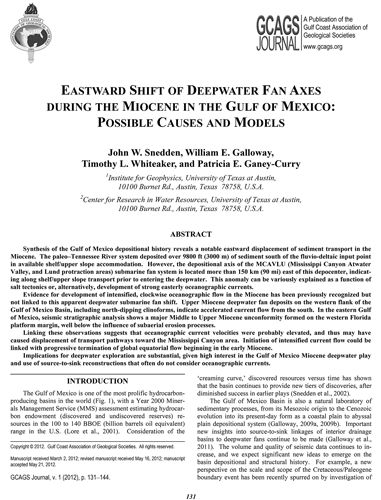
2012 President's Award
for Outstanding Papar in the GCAGS Journal
“Eastward Shift of Deepwater Fan Axes during the Miocene
in the Gulf of Mexico: Possible Causes and Models”
John W. Snedden, William E. Galloway,
Timothy L. Whiteaker, and Patricia E. Ganey-Curry |
|
John W. Snedden
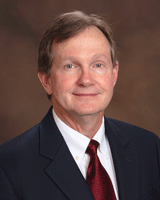
|
John W. Snedden, Senior Research Scientist, is Director of the Gulf Basin Depositional Synthesis Project at the Institute for Geophysics, University of Texas at Austin. He received his B.A. from Trinity University (San Antonio), his M.S. at Texas A&M University (College Station), and Ph.D. from Louisiana State University (Baton Rouge). With multiple domestic and international assignments, he worked for Mobil and ExxonMobil for over 25 years in research, exploration, development, and production prior to joining the University of Texas.
John has served in various technical society capacities, including as SEPM Secretary-Treasurer, (2009–2010), Vice Chair of the 2006 AAPG Meeting (Houston), Technical Program Chair (Dallas, 1997), Co-Convener of the 1995 SEPM Research Conference (Ridges, Wedges, and Tongues), and Chair of the ad-hoc Committee on SEPM Book Business. He has also served as Vice-President of GCSSEPM (2008) and overall Co-Technical Chair of the AAPG International Meeting in Cape Town (2008).
He co-edited SEPM Special Publication 64, Isolated Marine Sand Bodies: Sequence Stratigraphic Analysis and Sedimentologic Interpretation. John has published on modern and ancient lagoonal, fluvial, deltaic, shelfal, and deepwater deposits as well as sequence stratigraphic correlation and reservoir connectivity. He has won the SEPM Excellence in Oral Presentation award and, with his co-authors, is the first recipient of the GCAGS Journal Best Paper Award.
Back |
|
|
William E. Galloway

|
Bill Galloway obtained his B.S. from Texas A&M in 1966, and M.A. (1969) and Ph.D. (1971) in Geological Sciences from the University of Texas at Austin. He first worked in Exploration Research for CONOCO, then returned to Austin as a Research Scientist at the Texas Bureau of Economic Geology. He is the Emeritus Morgan Davis Centennial Chair in Petroleum Geology in the Department of Geological Sciences, and a Research Professor in the Institute for Geophysics, University of Texas at Austin. He is the recipient of the SEPM Twenhofel Medal, GCAGS Outstanding Educator Award, GCSSEPM Doris Curtis Award, and the AAPG A. I. Levorsen Memorial Award, Wallace Pratt Memorial Award, Energy Minerals Division Best Paper Award, and Grover Murray Memorial Distinguished Educator Award. In 1995, he became the Principal Investigator on the Gulf Basin Depositional Synthesis project, an industrial consortium at the U.T. Institute for Geophysics. He continues to consult with the consortium program as it transitions into an expanded overview of the entire Gulf basin history.
Back |
|
|
Timothy L. Whiteaker

|
Dr. Whiteaker received his Ph.D. in Civil Engineering in 2004 from the University of Texas at Austin, where he has continued on as a Research Associate. Dr. Whiteaker implements a GIS database and custom toolset to support visualization and analysis for the Gulf of Mexico Basin Depositional Synthesis project. He’s interested in finding ways to make use of the project team’s interpolations to derive new knowledge about Gulf depositional patterns and their consequences.
Dr. Whiteaker also works at the Center for Research in Water Resources on a variety of projects, including the Hydrologic Information Systems component of the Consortium of Universities for the Advancement of Hydrologic Science, which seeks to improve hydrologic science in the U.S. by improving cyberinfrastructure and methods for working with scientific data.
Back |
|
Patricia E. Ganey-Curry
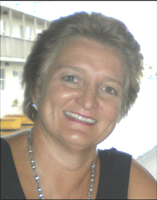
|
Patricia Ganey-Curry is Project Manager of the highly successful 18 year running research project Gulf Basin Depositional Synthesis (GBDS) at the University of Texas at Austin. For much of her 35 year career at U.T., she has served as the interface between the Institute for Geophysics and the oil and gas industry. Patricia received her B.S. in Marine Biology in 1978 from Texas A&M University.
Back |
|
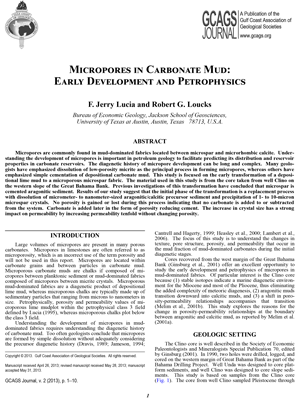
2013 President's Award
for Outstanding Papar in the GCAGS Journal
“Micropores in Carbonate Mud: Early Development and Petrophysics”
Jerry Lucia and Robert Loucks |
|
F. Jerry Lucia
.jpg)
|
Mr. F. Jerry Lucia is a Senior Research Scientist at the Bureau of Economic Geology, University of Texas at Austin. He is an internationally known expert in carbonate reservoir geology, reservoir characterization, petrophysics, and reservoir modeling. He has published numerous papers on carbonate geology and is the author of a book “Carbonate Reservoir Characterization,” published by Springer-Verlag. Before joining the Bureau in 1985, he was a Consulting Geological Engineer for Shell Oil Company assigned to the Head Office staff. Mr. Lucia retired in 1985 with 31 years’ experience as a geological engineer in research, operations, and administration. After retiring from Shell Oil, Mr. Lucia joined the Bureau of Economic Geology, where he was co-principal investigator of the Reservoir Characterization Research Laboratory for Carbonate Reservoirs until 2008. He is currently retired, but working part time for the Bureau. Mr. Lucia is an active member of the American Association of Petroleum Geologists, the Society of Petroleum Engineers, and the Society for Sedimentary Geology, and is a Fellow of the Geological Society of America. He received the AAPG Wallace E. Pratt memorial Award for Best Paper in 1994 and 1995, and the Cheney Award, Southwest Section AAPG in 2009.
Back |
|
Robert Loucks

|
Robert Loucks is a Senior Research Scientist at the Bureau of Economic Geology. He received his B.A. degree from the State University of New York at Binghamton in 1967 and his Ph.D. from the University of Texas at Austin in 1976. His general research interests include carbonate and siliciclastic sequence stratigraphy, depositional systems, diagenesis, and reservoir characterization. His present research includes deep buried reservoirs in the Gulf of Mexico, evaporate and carbonate paleokarst, and pore networks in carbonates, sandstones, and mudrocks.
Back |
|
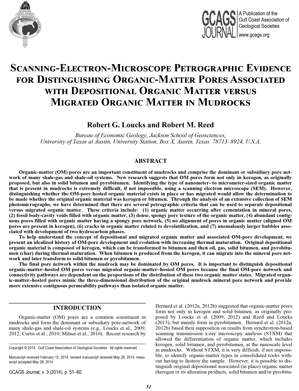
2014 President's Award
for Outstanding Papar in the GCAGS Journal
“Scanning-Electron-Microscope Petrographic Evidence for Distinguishing Organic-Matter Pores Associated with Depositional Organic Matter versus Migrated Organic Matter in Mudrock”
Robert G. Loucks and Robert M. Reed |
|
Robert Loucks

|
Robert Loucks is a Senior Research Scientist at the Bureau of Economic Geology. He received his B.A. degree from the State University of New York at Binghamton in 1967 and his Ph.D. from the University of Texas at Austin in 1976. His general research interests include carbonate and siliciclastic sequence stratigraphy, depositional systems, diagenesis, and reservoir characterization. His present research includes deep buried reservoirs in the Gulf of Mexico, evaporate and carbonate paleokarst, and pore networks in carbonates, sandstones, and mudrocks.
Back |
|
Robert M. Reed
|
Back |
|
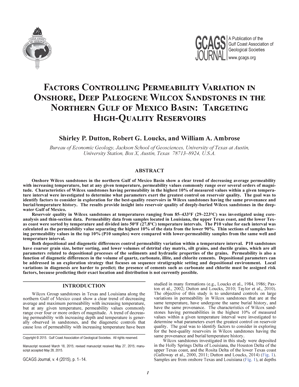
2015 President's Award
for Outstanding Papar in the GCAGS Journal
“Factors Controlling Permeability Variation in Onshore, Deep Paleogene Wilcox Sandstones in the Northern Gulf of Mexico Basin: Targeting High-Quality Reservoirs”
Shirley Dutton, Robert G. Loucks, and William A. Ambrose |
|
Shirley Dutton
-copy.gif)
|
Shirley P. Dutton is a Senior Research Scientist at the Bureau of Economic Geology, The University of Texas at Austin, where she has spent her entire professional career. Her main area of research is in sandstone diagenesis, clastic sedimentology, and reservoir characterization. She received a B.A. from the University of Rochester and M.A. and Ph.D. degrees from The University of Texas at Austin, all in geology. Her current research involves diagenesis and reservoir quality of deep to ultradeep sandstones in the Gulf of Mexico. She was an AAPG Distinguished Lecturer in 1986-87 and 2013-2014.
Back |
|
Robert G. Loucks
-copy.gif)
|
Robert G. Loucks is a Senior Research Scientist at the Bureau of Economic Geology. He received his B.A. degree from the State University of New York at Binghamton in 1967 and his Ph.D. from the University of Texas at Austin in 1976. His general research interests include carbonate and siliciclastic sequence stratigraphy, depositional systems, diagenesis, and reservoir characterization. His present research includes deeply buried reservoirs in the Gulf of Mexico, evaporite and carbonate paleokarst, and pore networks in carbonates, sandstones, and mudrocks.
Back |
|
William A. Ambrose
-copy.gif)
|
William A. Ambrose is a Research Scientist at the Bureau of Economic Geology. He received a Master of Arts degree in geological sciences in 1983 from the University of Texas at Austin. Since joining the Bureau of Economic Geology in 1987, he has worked on a variety of projects at the Bureau, including characterization of the Woodbine Group in the East Texas Basin, Frio fluvial and deltaic reservoirs in South Texas, tight-gas reservoirs in the Cleveland Formation in the Texas Panhandle, co-production of gas and hot brine from Oligocene reservoirs in the Texas Gulf Coast, evaluation of coalbed methane reservoirs in Rocky Mountain basins, and reservoir characterization and basin analysis studies in Venezuela and Mexico. He is currently the principal investigator of the Bureau’s STARR (State of Texas Advanced Oil and Gas Resource Recovery) program, past president of the Energy Minerals Division (EMD) of AAPG, chair of the EMD Coal Committee, and past co-chair of the AAPG Astrogeology Committee.
Back |
|
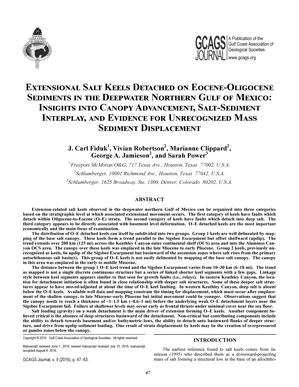
2016 President's Award
for Outstanding Papar in the GCAGS Journal
“Extensional Salt Keels Detached on Eocene-Oligocene Sediments in the Deepwater Northern Gulf of Mexico: Insights into Canopy Advancement, Salt-Sediment Interplay, and Evidence for Unrecognized Mass Sediment Displacement”
J. Carl Fiduk, Vivian Robertson, Marianne Clippard, George A. Jamieson, and Sarah Power |
|
J. Carl Fiduk

|
Carl Fiduk is an independent consultant and owner of Fiduk Consulting, LLC. To his clients he provides expertise on petroleum exploration, salt tectonics, marine depositional processes, basin analysis, seismic interpretation, seismic processing, and structural geology. He earned his B.A. and M.S. in geology from the University of Florida, an M.B.A. from The University of Texas Permian Basin, and a Ph.D. in geology and geophysics from The University of Texas at Austin. He has published over 90 peer reviewed abstracts/papers and is a past AAPG Distinguished Lecturer.
Back |
|
Vivian Robertson
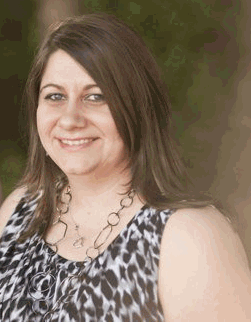
|
Vivian is an Interpretation Geologist with 12 years industry experience with Schlumberger. Originally a Geophysicist with both time and depth imaging experience including both US land and transitional zone/shallow marine Gulf of Mexico data. For the past 7 years her career has been dedicated to the interpretation of regional and complex geological features with a focus on salt modeling and stratigraphic mapping. Regional areas of experience include: Gulf of Mexico (shelf, deep water and Mexico), Offshore Brazil, Mediterranean, Nova Scotia, and the Black Sea.
Back |
|
Marianne Clippard

|
Marianne Clippard is currently an interpretation geophysicist with WesternGeco where she is engaged with both project work and teaching seismic interpretation and salt tectonics. She received a BS in Geological Engineering from the University of Missouri-Rolla and an MS in Geophysics from the University of Houston prior to joining Sohio/BP. At BP she worked Prudhoe Bay and Endicott field development prior to exploration of the Alaskan North Slope transition/offshore and the Delaware Basin. For the past nine years she has been with WesternGeco, focusing on salt tectonics and interpretation for depth imaging in the US and Mexican GoM. Marianne has had a lifelong passion for geology and structural interpretation that began with rock collecting and active field mapping with orienteering clubs. Her geoscientific passion continues with her current interest in interpreting the tectonic history of salt dominated basins.
Back |
|
George A. Jamieson

|
George is a seismic interpretation geologist with 35 years industry experience, almost 33 with Schlumberger, comprising regional to prospect scale structural/stratigraphic interpretations of 2D and 3D seismic data, some of which incorporated non-seismic data such as gravity and magnetic. Interpretation projects include regional geological studies, structural interpretations for velocity models involving complex salt, field studies and prospect evaluations. Areas worked in include shelf and deepwater Gulf of Mexico (both US and Mexican administered regions), offshore Brazil, offshore Peru, onshore Venezuela and Argentina, North sea, Mediterranean (offshore Nile Delta and Sinai) and offshore West Africa.
Back |
|
Sarah Power

|
Sarah is an interpretation Geologist with 7 years experience with Schlumberger. Projects include, complex structural and stratigraphic studies, Structural model building for salt prone provinces and regional geologic studies. She is an expert petrel user and has helped develop some of the commercial plugins. Her experience covers all the major offshore salt basins worldwide, with particular experience in the North Sea, Africa, Gulf of Mexico (US and Mexico) and Atlantic Canada.
Back |
|
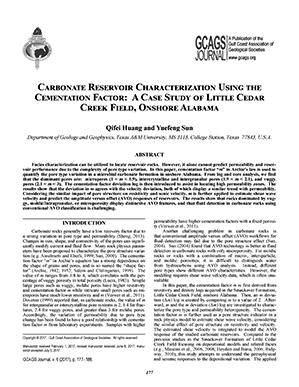
2017 President's Award
for Outstanding Papar in the GCAGS Journal
“Carbonate Reservoir Characterization Using the Cementation Factor: A Case Study of Little Cedar Creek Field, Onshore Alabama”
Qifei Huang and Yuefeng Sun |
|
Qifei Huang

|
Qifei Huang received her Ph.D. in 2017 from the Department of Geology and Geophysics, Texas A&M University. Her research focuses on carbonate reservoir characterization, with an integration of core analysis, well log interpretation and seismic inversion. She has years of summer working experience in the oil industry and is currently working as a Geophysicist in Occidental Petroleum Corporation. She is an active member of SEG, AAPG.
Back |
|
Yuefeng Sun
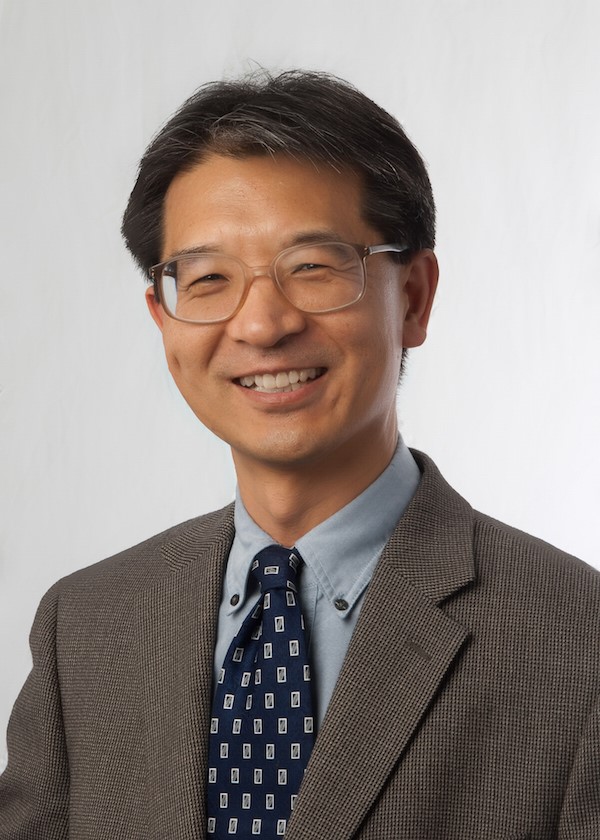
|
Dr. Yuefeng Sun is Professor of Geology and Geophysics at Texas A&M University, College Station, USA. He received his Ph.D. from Columbia University in 1994. His research interests include petroleum geology, reservoir geophysics, biogeophysics, mechanics and electrodynamics of multiphase fractured porous media, and advanced energy research. He is the Director of the TAMU Reservoir Geophysics Program with research focus on integrating geology, rock physics, geophysics, and reservoir simulation for energy exploration and production. He has served on the editorial boards of Geophysics and Journal of Computational Acoustics. He is a member of SEG, AAPG, and AGU.
Back |
|

2018 President's Award
for Outstanding Papar in the GCAGS Journal
“Methodology for Correcting Bottomhole Temperatures Acquired from Wireline Logging Measurements in the Onshore U.S. Gulf of Mexico Basin to Characterize the Thermal Regime of Total Petroleum Systems”
Lauri A. Burke, Ofori N. Pearson, Scott A. Kinney, and Janet K. Pitman |
|
Lauri A. Burke
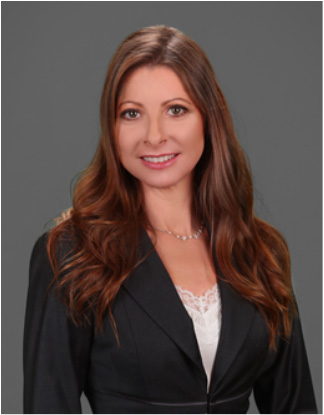
|
Lauri A. Burke, Ph.D. is a Research Geophysicist and Principal Investigator for the Gulf Coast Geopressure and Geohazards Project with the Energy Resources Science Center at the U.S. Geological Survey. She has authored and co-authored 20 scientific publications. She served 8 years as Director of the regional scientific organization Denver Well Logging Society, and is an active member of SPWLA, SEG, and AAPG. Lauri earned her Ph.D. in geophysics from Colorado School of Mines. Current research interests include regional modeling of geopressure systems; pressure-temperature constraints on known and undiscovered hydrocarbon accumulations; migration modeling in unconventional rocks; and regional formation evaluation of conventional and continuous plays.
Back |
|
Ofori N. Pearson
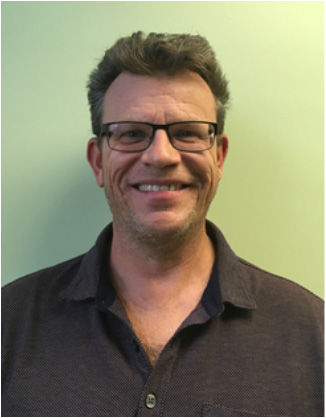
|
Ofori N. Pearson, Ph.D. is the Deputy Science Center Director for the Central Energy Resources Science Center of the U.S. Geological Survey. He has authored and co-authored 22 scientific publications on geologic energy resources and assessments of undiscovered oil and gas accumulations within strata of the domestic Gulf Coast. As a structural geologist, his scientific interests include seismic stratigraphy, paleo-reconstruction of the Gulf of Mexico Basin, and quantitative assessments of known and undiscovered hydrocarbon resources of the domestic Gulf Coast region. Prior to joining the U.S. Geological Survey, Ofori worked for BP Exploration in Houston, where he worked primarily in the deepwater Gulf of Mexico. Ofori received his Ph.D. in structural geology from the University of Arizona.
Back |
|
Scott A. Kinney
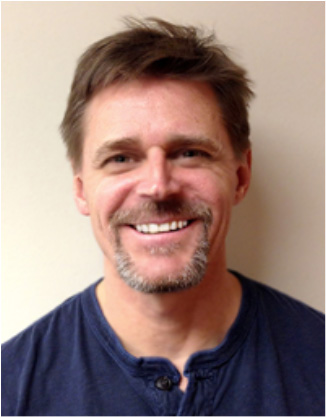
|
Scott A. Kinney has worked for the U.S. Geological Survey for the past twenty years as a Physical Scientist with the Central Energy Resources Science Center. He has co-authored 34 scientific publications on geologic energy resources and assessments of undiscovered oil and gas accumulations. He has worked on the National coal assessment and has been part of the Gulf Coast project since 2000.
Back |
|
| Janet K. Pitman |
Janet K. Pitman is Scientist Emeritus with the Central Energy Resources Science Center. Her research interests include modeling of thermal maturity and quantitative assessment of known and undiscovered hydrocarbon resources nationally and internationally.
Back |
|

2019 President's Award
for Outstanding Papar in the GCAGS Journal
“Neogene Evolution of the Central Texas Landscape and the Edwards Aquifers after Balcones Faulting”
Peter R. Rose |
|
| Peter R. Rose |
Back |
|
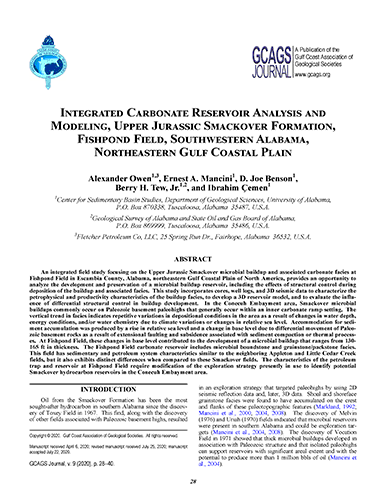
2020 President's Award
for Outstanding Papar in the GCAGS Journal
“Integrated Carbonate Reservoir Analysis and Modeling, Upper Jurassic Smackover Formation, Fishpond Field, Southwestern Alabama, Northeastern Gulf Coastal Plain”
Alexander Owen, Ernest A. Mancini, D. Joe Benson, Berry H. Tew, Jr., and Ibrahim Çemen
|
|
| Alexander Owen |
Back |
|
| Ernest A. Mancini |
Back |
|
| D. Joe Benson |
Back |
|
| Berry H. Tew, Jr. |
Back |
|
| Ibrahim Çemen |
Back |
|
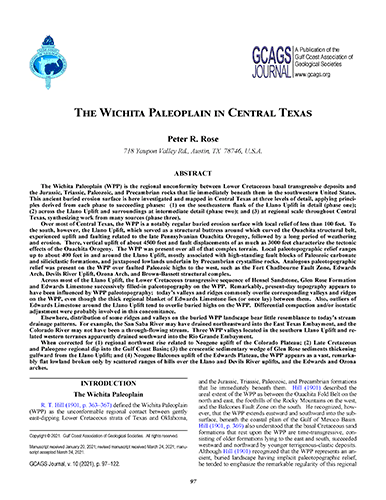
2021 President's Award
for Outstanding Papar in the GCAGS Journal
“The Wichita Paleoplain in Central Texas”
Peter R. Rose
|
|
| Peter R. Rose |
Back |
|
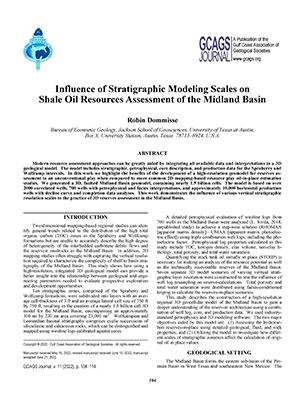
2022 President's Award
for Outstanding Papar in the GCAGS Journal
“Influence of Stratigraphic Modeling Scales on Shale Oil Resources
Assessment of the Midland Basin”
Robin Dommisse
|
|
| Robin Dommisse |
Back |
|

2023 President's Award
for Outstanding Papar in the GCAGS Journal
“Volcanic Origin and Significance of Glauconite Grains in the Upper Cretaceous Austin Chalk Formation in the Balcones Igneous Province, South and Central Texas”
Robert G. Loucks and Robert M. Reed |
|
| Robert G. Loucks and Robert M. Reed |
Back |
|
| |
|
|
|
|
| |
|
|
|
|

